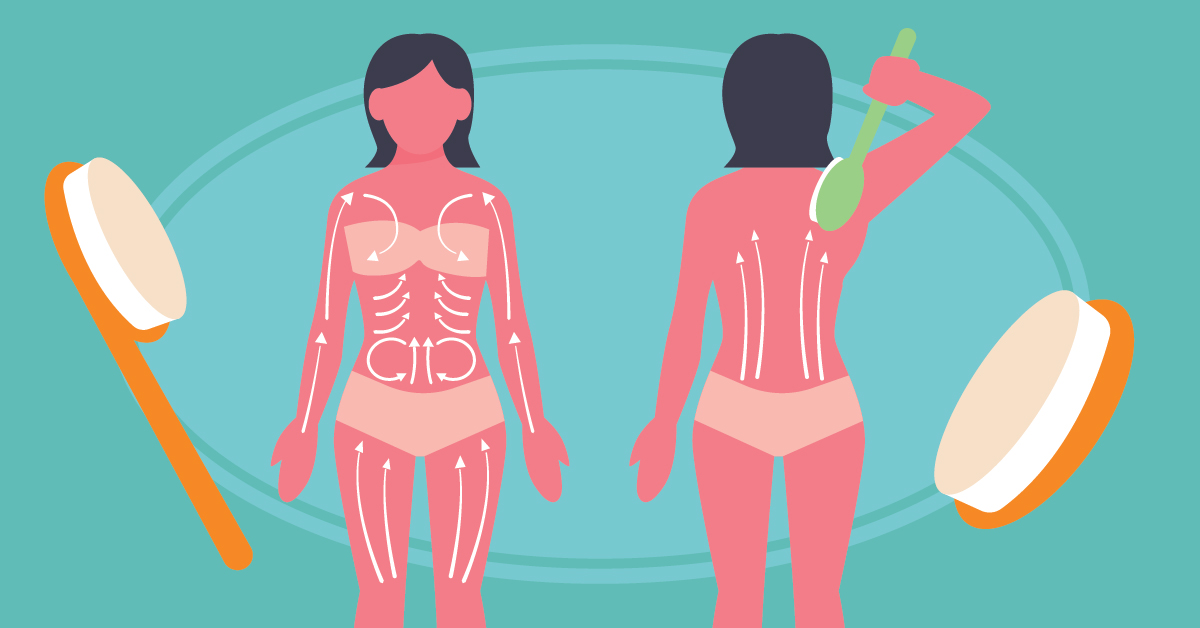Dry brushing, an ancient healing practice that entails brushing dry skin with a natural bristle brush, has gained mainstream buzz for enhancing the skin’s health and appearance. But are the claims true? Read on to hear experts weigh in on the potential benefits of dry brushing and discover how to do the practice at home.
Health and Beauty Claims for Dry Brushing
Many people purport benefits from dry brushing, including exfoliation, increased circulation, and decreased appearance of cellulite. No scientific studies back up these claims, so we asked three experts to weigh in about the benefits of dry brushing.
Exfoliation
Sarah Villafranco, M.D., a former ER doctor who founded the wellness brand Osmia Organics, believes dry brushing is “a great way to exfoliate the skin gently, as well as encourage healthy lymphatic flow and circulation, both of which support the body’s natural detoxification process.” As a physical exfoliator, the bristles manually remove dead skin cells and unclog pores to reveal smoother skin. Sloughing away the top layer of skin can also “allow skincare products to absorb nicely after bathing,” Villafranco says.
Circulation
As Villafranco mentioned, dry brushing may improve the movement of fluid through the body. Skin tends to be a little red after dry brushing and the slight inflammation indicates increased circulation. “Dry brushing improves circulation, encouraging the delivery of oxygen and nutrients to the skin, keeping it firm, fresh, and youthful,” explains Rhea Grous, a facialist who founded and directs La Suite Skincare at Union Square Dermatology in New York City.
Lymphatic drainage
“Skin brushing encourages the circulation of lymph fluid through the lymphatic system,” Grous says. “This fluid bathes and nourishes the cells of the body’s tissues and eliminates cellular waste.” Because this process can remove cellular waste and toxins, some practitioners link it to the detox process. However, Joshua Zeichner, M.D., director of cosmetic and clinical research in dermatology at Mount Sinai Hospital, disagrees with this claim. “While there have been reports that dry brushing has a detoxifying effect, the only organs in the body with detoxifying effects are the kidney and liver.”
Decreased appearance of cellulite
The act of massaging skin can increase blood flow and circulation, causing the skin to look flushed and plump. While cellulite may appear to be reduced, no evidence suggests the effect is more than temporary. “I think the claims about cellulite reduction are unsupported,” Villafranco says. “Cellulite is mostly determined by genetics, and its appearance is difficult to alter for most people.”
Dry Versus Wet Brushing
The increased friction from exfoliating dry skin means it can be more effective than exfoliating wet skin. “The goal of dry brushing is to remove dead cells, which is more difficult to do with a brush if your skin is wet or newly moisturized,” says Zeichner.
That said, you can exfoliate wet skin for other benefits. Villafranco suggests using a salt scrub in the shower to add skin-nourishing oils to your skin. Just alternate dry brushing and wet brushing and don’t do both on the same day. Dry brushing removes the skin’s surface layer and can cause temporary sensitivity.

Conclusion
There’s no reason not to dry brush once a day if it works for your skin type, says Villafranco. People with normal and dry skin benefit most from the technique, while those with acne-prone or dermatitis-prone skin may create more inflammation and should exercise caution. Even normal skin can feel a little raw after dry brushing, so pay attention to how your skin reacts to determine how frequently to dry brush.
“Dry brushing may feel good and can improve radiance, but it is unclear if there is truly any effect on blood flow or lymphatic drainage,” says Zeichner. Even if it doesn’t result in any long-term benefits like reduced cellulite, a feel-good practice that results in radiating skin may be reason enough to give it a try.
